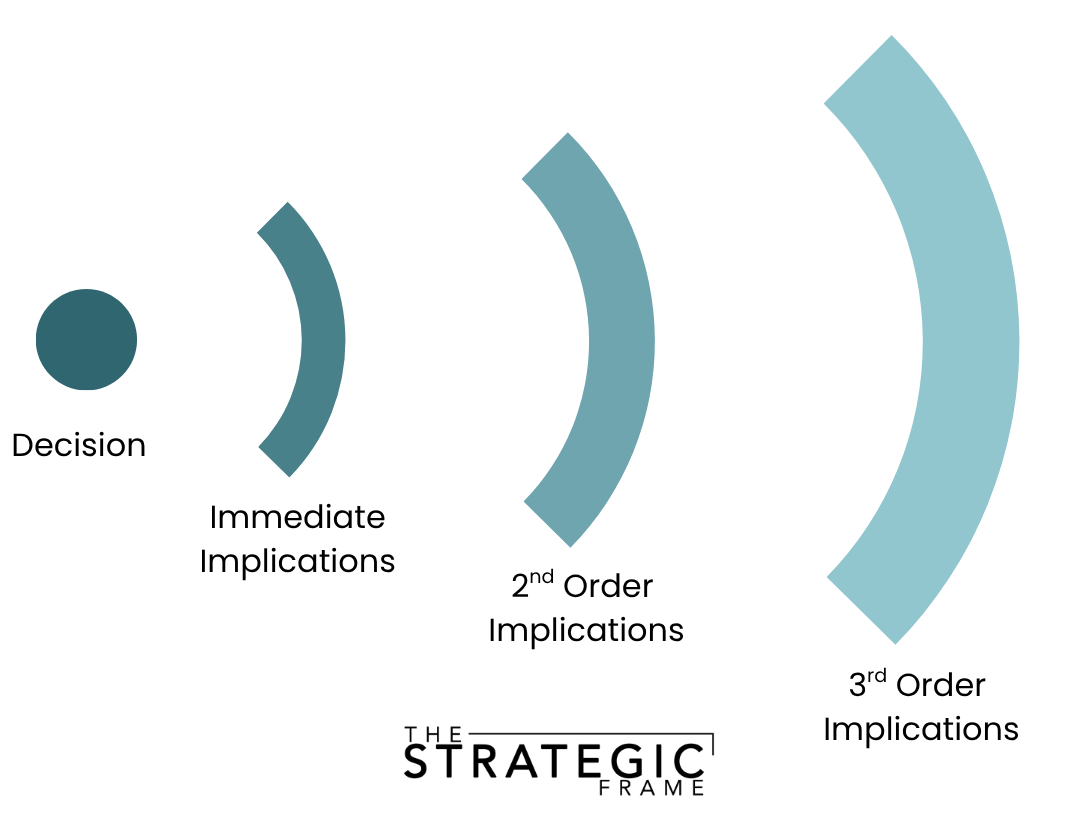Second-Order Thinking
Make better decisions by thinking beyond the obvious
EXECUTIVE SUMMARY:
Second-Order Thinking is the ability to look beyond immediate results and consider the ripple effects of your decisions. Netflix’s controversial split of its DVD and streaming services in 2011 hurt in the short term but positioned the company for long-term dominance. Asking “And then what?” repeatedly is a powerful way to make more strategic choices.
Last week we talked about First Principles Thinking, which is about boiling problems down to their core truths. Now, let’s cover Second-Order Thinking, which is about considering the consequences of your decisions.
What is Second-Order Thinking?
Second-Order Thinking is a method of decision-making that forces you to think beyond the immediate results. Here’s an example:
First-Order Thinking: “If we discount prices, we’ll sell more.”
Second-Order Thinking: “If we discount prices, customers may wait for sales instead of buying at full price.”
This can of course then be taken to deeper levels.
Third-Order Thinking: “If customers wait for sales instead of buying at full price, they may begin to devalue the product.”
Fourth-Order Thinking: “If customers begin to devalue the product, then they will proceed to devalue the entire brand, affecting sales of all of our products.”
As you can see, considering the implications of implications can lead to better decision-making.
Steps to Apply Second-Order Thinking
Here’s how you can incorporate Second-Order Thinking:
State the decision.
Predict the immediate outcome.
Ask, “And then what?”
Repeat asking, “And then what?” multiple times.
Evaluate the long-term impact scenarios.
Make a decision based on the full ripple effects.
How Netflix Benefitted from Second-Order Thinking
In 2011, Netflix made an unpopular decision to charge separately for its DVD-by-mail service and its streaming service, which effectively increased prices by 60 percent for customers who used both services. A few months later, they took it further and split the services into two separate businesses. This resulted in the company’s market cap dropping by 70 percent and more than 800,000 subscribers canceling.
Was this the right call? If Netflix thought only about the immediate ramifications, absolutely not.
But what about the longer-term strategic implications? Steve Jobs, founder of Apple, famously said, “If you don’t cannibalize yourself, someone else will.”
Netflix CEO Reed Hastings anticipated that DVD rentals were dying, and streaming was the future. So he cannibalized his own company.
While the first-order impact of this decision was customer frustration and lost subscriptions, Second-Order Thinking took into account that the world was moving online, and Netflix needed to get ahead of this trend, even if it hurt in the short run.
This pivotal decision led to consistent subscription growth and turned Netflix into a household name, now with over 300 million subscribers worldwide.
Wrapping It All Up
When making decisions, don’t stop at the first domino. Ask what might happen next, over and over again. Second-Order Thinking is a superpower when you're setting strategy, pricing products, choosing partners, or even crafting your brand message. So the next time you're thinking through a big decision, pause, and ask “And then what?”
This email is sponsored by AccessVR
AccessVR offers a no-code VR platform that empowers trainers to develop and scale their own immersive experiences, with ease. Learn more at https://www.accessvr.com/.
Sources & Further Reading:



